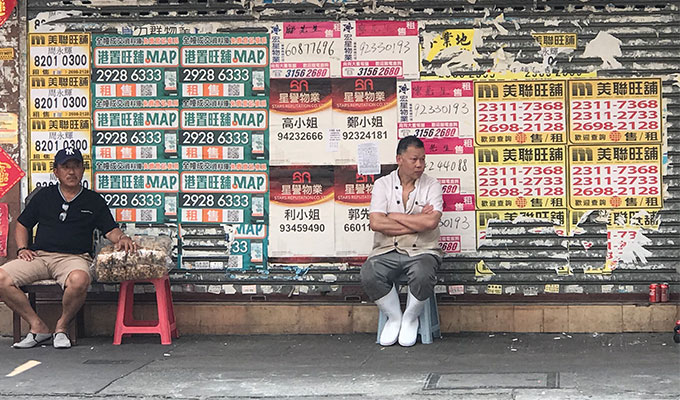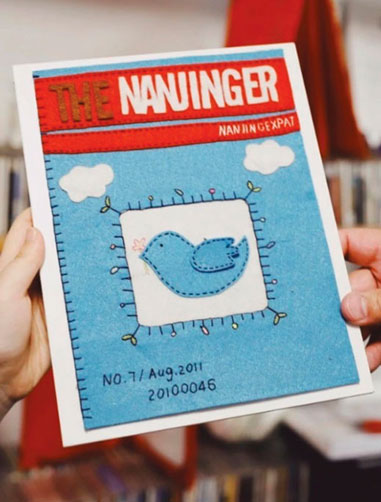It was known as the Hong Kong Walled City, or The City of Darkness. Infamous for its 30 years of ungoverned vice and much more. Run by the Triads, the city that never saw sunlight was an entity unto itself. Nowadays, a part of it is known as little Thailand, and showing signs of becoming a trendy hotspot for young Hong Kongers.
Somewhat typically, I was in Hong Kong on a visa run. Having had only 1 day to prepare for my trip, and not knowing anything about the districts of the island or where to stay, I randomly picked a hotel that was in a place close to the visa office called Kowloon City. After dumping my bags in my room and locking away my very very important passport pick-up form, I set out to explore this city that was to be my home for the next 5 days.
As I wandered the streets, with familiar Chinese characters before my eyes and Cantonese trailing in the air around my ears, I came across traditional medicine shops, massage parlours and roasting ducks, before I began to smell something also quite familiar; the sweet aroma of tropical fruit mixed so well with the burning of incense.
It was this undeniable South East Asian Bangkok blend of tiger balm and durian that made me look around and take notice. I was standing on South Wall Road, where a part of Kowloon’s infamous Walled City once stood. It and the adjacent streets are jam packed with everything Thai, while monks in orange robes stroll the streets, collecting donations outside Thai shops, markets and restaurants.
I poked my head into a Thai grocery and got talking with the owner, who said, “I lived in Thailand 30 years ago, I was living amongst the Chinese community. When I saw an influx of Thai immigrants beginning to settle in Kowloon, I came back and opened my grocery. That was the nineties and the rent for this shop was HK$1,900, now it’s $9,000! And this is a cheap area in Hong Kong!” The woman confirmed that most Thai immigrants work as labourers or in the services industries. I inquired, “How long has this area been Little Thailand?”. “[Since] not long after the Wall came down”, she answered.
At that point I had never heard of The Wall; what is this mysterious wall of which they speak? I asked around. Handing me my prawn cakes, Thai restaurant owner, Jeff Tsui, told me, “The Kowloon Wall was where the immigrants lived before we came here, it was totally lawless because neither the British nor the Chinese were able to control it. We are in a part of what it was right now”.
Almost laughing, he went on, “It’s not dangerous these days. Now Kowloon has a lot of families and tourists, in fact I think it’s becoming a popular destination. The Songkran festival is happening at the moment, we will celebrate it in a few days, which the community is preparing for. We are all very close”.
Thailand’s annual water fight, known as Songkran, coincidentally takes place in April, while the Walled City of Kowloon was knocked down in April of 1994. Its beginnings go as far back as the Song Dynasty, where it was used as an outpost for the trade of Salt. The 1842 Treaty of Nanjing saw Hong Kong handed over to the British, but Qing authorities kept a hold of the area and built a defensive wall around it in order to keep an eye on British activities; effectively securing it as Chinese property, surrounded by British land.
When the Qing dynasty fell in 1912, it was left to the British, who basically abandoned it. During the time of the Japanese occupation, the physical wall was taken down and used to construct Kai Tak Airport, leaving only the homes within. After WW2, China reclaimed the city, and as a result of the civil war between the nationalists and the communists, thousands of refugees fled the mainland; their first port of call was to set up shop in the Walled City.
- Yinchuan; Pearl of the Silk Road
- Enchanting Kazakhstan; Steroids on the Steppe
- Wugongshan; Get off of My Cloud!
From then on, until 1994, the British used a “hands-off” approach to the Walled City, leaving it to its own devices and governed only by the Chinese mafia. Thus, during the 60s, 70s and 80s, the city was a no-go zone for British authorities and crime flourished. Legend has it that sunlight never reached the lower levels of the city, while the 50,000 residents used umbrellas when walking the alleyways as water constantly dripped from broken pipes above. The area became known for its illegal doctors and dentists, who provided dubious health care for citizens of the Wall. Yet, while crime ran rampant, it somehow peacefully coexisted side-by-side hard working families, as former residents of the Wall fondly reveal in a BBC documentary.
The majority of the former Walled City is now a beautiful city park, with parts of the area, such as Little Thailand, soldiering on in one of the most densely populated, challenging and most expensive places on Earth. So, the next time you are in Hong Kong (whether by choice or not), pry yourself away from the glitz and glamour of Causeway Bay, and check out from where all those martial art films of the 80s got their inspiration.











